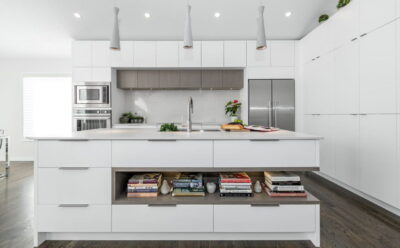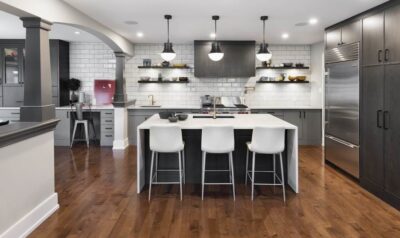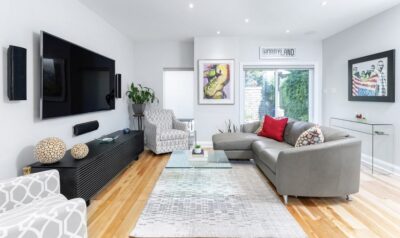The home gym has been growing as a wish list item for basement renovations over the past number of years. But interest in carving out this type of space at home has become a top priority since the pandemic hit.
COVID-19 has brought on changes in lifestyle, habits and routines in just about every aspect of life for just about everyone. The temporary closures of businesses has brought frequent shutdowns of fitness facilities and exercise studios.
With the stay-at-home orders, people have found themselves spending time indoors and, in many cases, trying their best to make their home function for them and their families in ways they may not have required pre-pandemic. That includes home offices and gyms.
Whether the pandemic has brought to light the need or desire for an at-home gym for you and your family or it has been a long-anticipated item working its way up your wish list over the years, our design team has put together some tips on how to create a home gym. It will allow you to stay active and healthy despite what the world is up to outside your four walls.
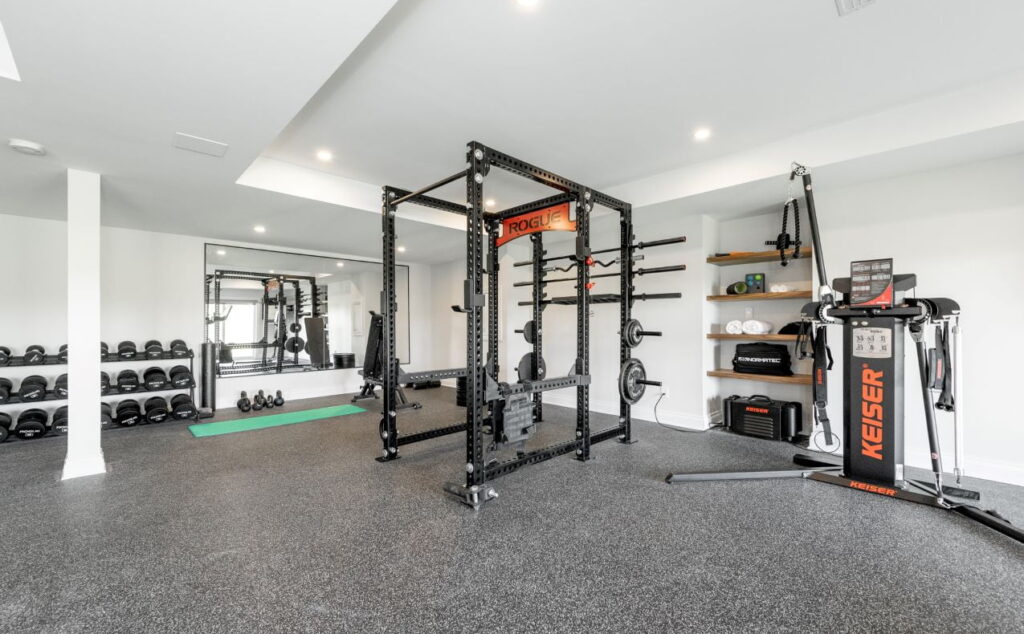
Location, location, location
Choosing the right location for your gym space is one of the most important decisions.
Most of the gyms we design are part of a basement renovation. More often than not, basements have the most square footage available in the home to accommodate the size required to house all the equipment and a clear area for activity.
Basements gyms are often the choice because they are typically designed and constructed in conjunction with the rest of the basement. This allows you to plan out how integrated or separate the gym is to the rest of the finished spaces.
Depending on your fitness style preferences and the anticipated uses within your basement, you can choose to make your home gym a separate room, perhaps with a solid door to create a more private and secluded atmosphere. This could be particularly beneficial if there are many multipurpose areas in the basement that could be occupied at the same time.
A more intimate fitness area can also be desirable for certain focus-based exercises, like yoga.
A fully open-concept design may be chosen if you are looking for a way to make the basement feel as large as possible while creating a more communal environment. If you prefer your equipment to be seen and admired by all and you don’t mind having your finished spaces both physically and visually connected, the open-concept route may be the right fit for you.
For a middle ground option, we have designed gyms with full-height glass walls to create a physical barrier that still allows for visual connectivity. A large barn door or glass French doors can also be an option when looking to create a gym area that is flexible in its connection to the rest of your basement.
Take inventory
Making sure the floor plan works is critical.
Like designing any room, the floor plan and furniture layout are especially important. A space can look beautiful, but if it is not functional and serving the users well, then the design has failed.
Take inventory of your equipment as well as keeping in mind the items you may want to add to your collection in the future. This will help begin the process of calculating the floor area, wall and even ceiling space you will have to accommodate.
When designing the layout of your equipment in your gym, it is a good idea to mentally walk through your typical routines to see which pieces benefit from being next to or across from one another and which ones can be placed further away.
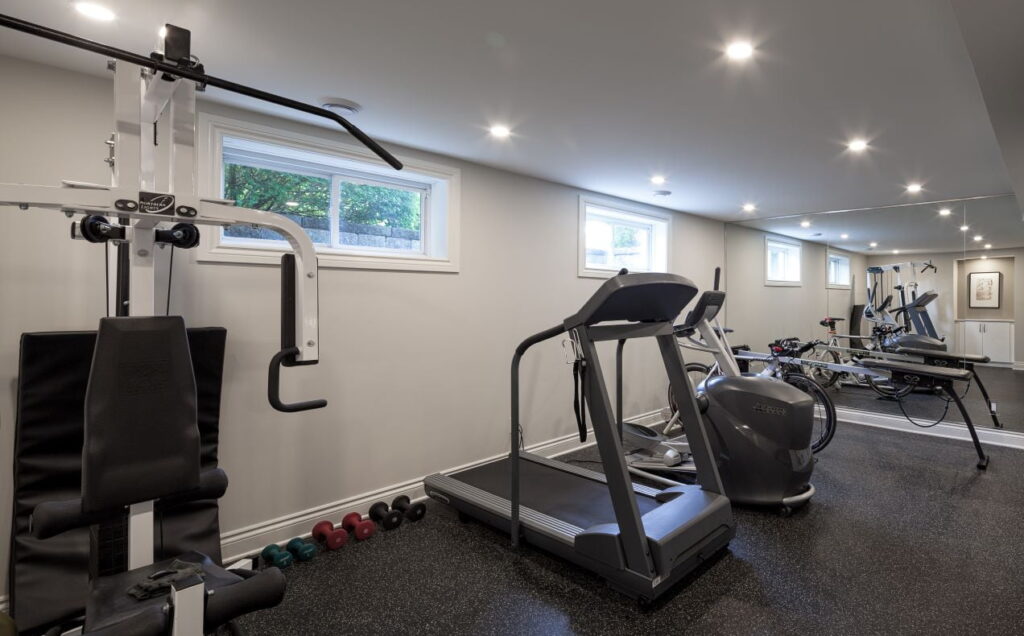
Beauty and function
As mentioned above, form and function are critical in a home gym design. But that is not to say style and beauty do not have a place, too. When it comes to the materials and finishes in a gym space, they may need to serve different purposes than the rest of the finished basement.
For instance, depending on the type of equipment and exercise being done in the space, specialty rubber gym flooring may be recommended. The flooring used throughout your basement, such as luxury vinyl flooring, may also be OK to continue into the gym.
Lighting and storage are often particularly important design factors to consider for an at-home gym. Dimmable LED pot lights are great for general lighting throughout, but additional integrated lighting at open shelving or even integrated LED lighting in your wall mirror may be worthwhile. The attention to detail can both benefit the esthetic of the gym as well as the daily function.
Another way to step up the gym experience at home is by incorporating technology such as an audio system and television. In addition to the entertainment value they can bring, you can use them to elevate your participation and intentionality by following along to fitness videos or logging onto virtual fitness classes.
Finally, making some design decisions that connect the gym to the rest of your home can also help make it feel that much more inviting and inspiring. This can be achieved by choosing the same or a similar colour palette of finishes as you have in the other rooms. Paint colours, hardware finishes, lighting selections, and even artwork and window coverings can help make your home gym feel just like that — home.






